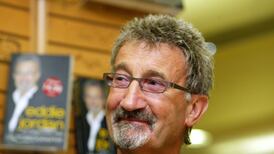The death of Fr Ronan Drury, editor of The Furrow, at the age of 93, is a significant milestone not only in Irish religious journalism, but in the intellectual life of Ireland and of Catholicism not only at home but also internationally.
Although he was born in Mullagh, in the diocese of Kilmore, he received his secondary education in St Finian’s College in Mullingar, which was financially more accessible, and therefore, when he entered the priesthood, did so as a priest of the diocese of Meath. That notwithstanding, he continued to cherish his Northern roots, and on one occasion remarked to the bishop of Kilmore, with his customary impish wit, “You could have had me for a fiver”.
When Ronan Drury succeeded Dr JGMcGarry as editor of the The Furrow on the latter's death in 1970, it was as seamless a transition as could be imagined. The apprentice, as in the best of traditions, was to become the master. The continuity – and indeed the development – of the intellectual, pastoral and theological life of Irish Catholicism, all of which had been so much a feature of that publication since its launch in 1950, was enhanced. These, in effect, were the foundations on which Ronan Drury quietly, often courageously, and with the help of an extraordinary range of writers, continued his predecessor's work of constructing a monumentum aere perennnius.
Indeed, given its extraordinary reach across the continents, The Furrrow was almost a prefiguration of the internet: a thin, live wire, coursing with the electricity of new ideas and powered by fine and often courageous writing, which gave all its readers, clerical and lay, an extraordinary sense of community, of shared endeavour, of exploration and of commitment.
Drury’s initial engagement with the Furrow was in the area of film criticism. This was significant in itself, in that it was emblematic of the ways in which the Furrow was unashamedly dedicated to a continuous exploration of the modern world in all its cultural manifestations, and to discussion of the relationships between human creativity in the arts and religious sensibilities.
In continuing the work of McGarry, Ronan Drury demonstrated that the apprentice had learned well from the master, who once – in response to a query about how The Furrow had managed to flourish in an era of haphazard but sometimes crude and power-obsessed ecclesiastical censorship – observed that even in the age of the nihil obstat, "you can say almost anything you like, as long as you say it properly".
That did not mean that courage was not also still required on occasion, aided by church regulations that meant that editors of Catholic publications could acquire permission to publish from more than one religious authority. It was not an accident that the permissu superiorum attached for much of its existence to The Furrow originated in the diocese of Kildare and Loughlin, where it as printed, rather than that of Dublin, where it was edited. Indeed, on one occasion on which the late Archbishop of Dublin, Dr John Charles McQuaid, was in attendance at a function in Maynooth at which Ronan Drury addressed the students with his habitual admixture of high good humour and needle-sharp wit, the senior prelate, who normally exercised strict control over his facial muscles, was reported to have had difficulty in concealing his displeasure.
It was no accident that one of Ronan Drury’s disciplines, which he shared with his editorial predecessor, was homiletics or (as it was more engagingly known in earlier years) “Sacred Eloquence”. Indeed, some visitors to his office in Maynooth were rewarded with an introduction to a curious instrument like a rare piece of dental equipment which was then (and for all we know may still be) marketed to clergy as an aid to voice production from the pulpit. And, as generations of his students and editorial contributors could testify,
his blend of human, intellectual and pastoral gifts was unique. They were as sure a guide to what could and should be published in the dark days of ecclesiastical heavy-handedness and fear of change as they were in more heady recent times when the temptation, as a response to some demonstration of latter-day episcopal overkill, might have been to throw caution to the winds
Above all, however, his contribution can be found in list of contributors of extraordinary calibre who always felt honoured by an invitation to contribute to The Furrow under his perspicacious and often courageous editorship, many of whom were often also the beneficiaries of his generously bestowed friendship. They included, among many of the best-known international writers on religious and pastoral topic such as Karl Rahner, Gabriel Daly and Charles Curran, people like Seamus Heaney, Mary Robinson, Mary Gordon and Gina Menzies. As an editor, his willingness to take risks was tempered, not by caution, but by sound judgment that regarded effective communication as the supreme skill, and risk as its handmaiden rather than as an obstacle in the road.










